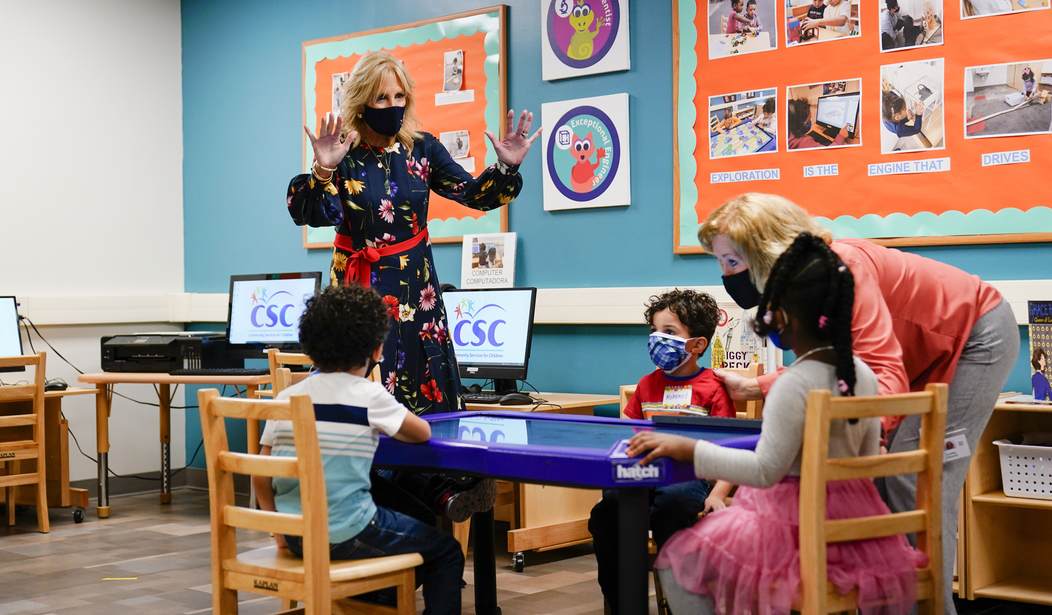There's good news and bad news about the $200 billion in COVID aid given to schools due to the pandemic.
The good news is that the massive amount of money actually did some good. Leaving aside the question of the stupidity of closing schools and forcing kids to participate in "remote learning," the money helped many students "catch-up" after falling behind.
The bad news is that the money is running out, and unless states and school districts find other means of funding, many of the programs that did the most good will be shut down.
Those are the conclusions from two studies published this week by researchers trying to gauge the effectiveness of three COVID-era funding bills passed in both the Trump and Biden administrations.
Even with all that funding, the Wall Street Journal reported that the overall effect on student outcomes was "modest."
"School aid likely drove some of the academic recovery, researchers say, with high-poverty schools seeing the greatest boost—and the most funding. Researchers also found that some of the bounceback was unrelated to the extra funding," says the Journal.
Some schools are already cutting these academic recovery programs.
“The pandemic dollars helped with recovery, but the recovery won’t be done,” said Tom Kane, a Harvard University professor and co-author of one of the new studies.
Test scores from 2023 show that there has been some bounce back from the lows of 2021 when math scores fell sharply. But the scores are still lagging from pre-pandemic levels.
Some researchers believe the research is misleading because many schools spent the money on other priorities.
Eric Hanushek, an education researcher at the Hoover Institution, said some schools failed to prioritize academic recovery. “The average here is very misleading,” he said of the new research.
One study, by a team of researchers from Harvard, Stanford and Dartmouth, compared two sets of school districts. Both groups had similar academic results before the pandemic and then similar drops in learning through 2022. One set of schools received much more Covid aid, in part due to quirks in the funding formula.
The schools—which spent nearly $3,000 more in Covid money per student—recovered at a faster rate. The higher-spending districts made up 50% of math learning loss through the spring of 2023, compared with less than 15% in the districts that got less money.
Test scores at high-poverty school systems remained behind their prepandemic levels, but the results would have been worse without the federal aid, the researchers concluded. “It helped undo some of the inequality produced by the pandemic,” said Sean Reardon, a Stanford University professor and study co-author.
“There were many reasons to think the money wouldn’t have a very big effect on kids learning because it wasn’t targeted and there were lots of other needs,” said Sean Reardon, an education researcher at Stanford University and co-author of the first paper. “But in fact it did have a significant effect on learning.”
Indeed, schools were under no obligation to spend that money on the academic recovery of students.
The 74, a nonprofit organization focused on America’s education system, found that many school districts have not used the COVID funds quickly or at all.
“Some have barely tapped monies advocates say are critical for academic recovery, while others have pumped millions of dollars into major classroom additions, upgrading athletic fields and other expenditures unrelated to the pandemic,” The 74 said.
Giving children a credit card and telling them to go shopping for anything they want is shockingly stupid. That's what Congress did with COVID aid for schools.










Join the conversation as a VIP Member